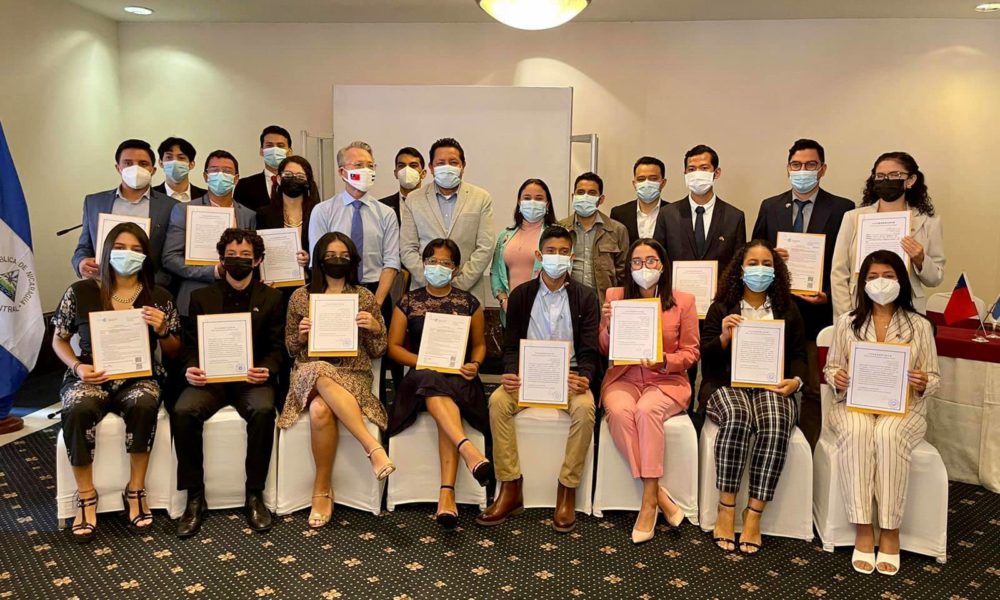

Ortega lost the 1990 election to a coalition headed by Violeta Barrios de Chamorro, wife of the slain newspaper publisher, who had briefly served on the JGRN before resigning. Economic hardship and a military draft combined to lower the FSLN's popularity. Ortega's presidency was marred by a civil war against Contra (short for contrarevolucionario, or counterrevolutionary) forces organized and financed by the United States. The same election established a multiparty legislature the National Assembly (Asamblea Nacional), that drafted a constitution that was promulgated in 1987 (Walker 2000, 73-74, 76). Ortega won the 1984 election and was inaugurated president in January 1985. In fact, the nine-man FSLN National Directorate (DN, Dirección Nacional) indirectly held the reins of power through JGRN head and DN chair Daniel Ortega Saavedra. The FSLN installed a Governing Council of National Reconstruction (JGRN, Junta de Gobierno de Reconstrucción Nacional) which nominally governed until elections were held in November 1984. He was overthrown in a 1979 popular insurrection led by the Sandinista National Liberation Front (FSLN, Frente Sandinista de Liberación Nacional), a Marxist group that forged links with Christians inspired by Liberation Theology, and adopted the red-and-black banner and nationalist philosophy of Sandino (Walker 2000, 70-72). The January 1978 assassination of Pedro Joaquín Chamorro, the Conservative publisher of the opposition daily newspaper La Prensa, turned even the elites against him. Because of its association with the Somozas, the Liberal Party in Nicaragua has staked out a position to the right of the Conservative Party.Īnastasio Somoza Debayle acquired a reputation as particularly brutal and corrupt. Both are elite parties, reflecting the fact that the country has very little in the way of a middle class.

Here as elsewhere in Latin America, the labels Liberal and Conservative have little in common with their meaning in the United States. Following his assassination in 1956 by a Sandino sympathizer, Anastasio was succeeded by his eldest son Luis Somoza Debayle, and then in 1967 by his younger son Anastasio Somoza Debayle (Walker 2000, 68).Īll three Somozas governed under the banner of the Liberal Party (Partido Liberal), which was opposed by the Conservative Party (Partido Conservador). Somoza had Sandino assassinated in 1934, then held a rigged election in 1936, finally taking office as president on 1 January 1937. National Guard commander Anastasio Somoza García used his military power to establish a family dynasty that would rule Nicaragua for almost half a century. During that time, they created and trained the National Guard (GN, Guardia Nacional), which assumed responsibility for maintaining order following the Marine withdrawal. US Marines occupied Nicaragua from 1912 to 1933, fighting a guerrilla war against irregular forces led by Augusto César Sandino. Another 35 are held by the left-wing Sandinista Front for National Liberation (FSLN, Frente Sandinista de Liberación Nacional), and the remainder by numerous smaller parties (CIA 2001). Of 93 seats, 36 are currently held by President Alemán's right-wing Liberal Alliance. There is a unicameral legislature, the National Assembly (Asamblea Nacional). Nicaragua's president is Arnoldo Alemán Lacayo, who took office on 10 January 1997. Half the population was below the poverty line in 2000 (CIA 2001). It is slightly smaller than New York State, and had an estimated population of just over 4.9 million in July 2001. Nicaragua is situated in the heart of Central America, between Costa Rica (to the south) and Honduras (to the north). The following is a summary of the historical background, of the current electoral campaign, and of the political parties and leaders involved. On 4 November 2001, Nicaragua will hold presidential and legislative elections. What is the background of the current political situation in Nicaragua? What are the circumstances surrounding the November 2001 elections? What are the political parties and movements that are involved directly or indirectly in the election? Who are the primary representatives of the parties? Any views expressed are solely those of the author or publisher and do not necessarily reflect those of UNHCR, the United Nations or its Member States. UNHCR is not responsible for, nor does it necessarily endorse, its content. United States Bureau of Citizenship and Immigration Services, Nicaragua: Information on the November 2001 presidential and legislative elections, 25 October 2001, NIC02001.RIC, available at: United States Bureau of Citizenship and Immigration Services


 0 kommentar(er)
0 kommentar(er)
